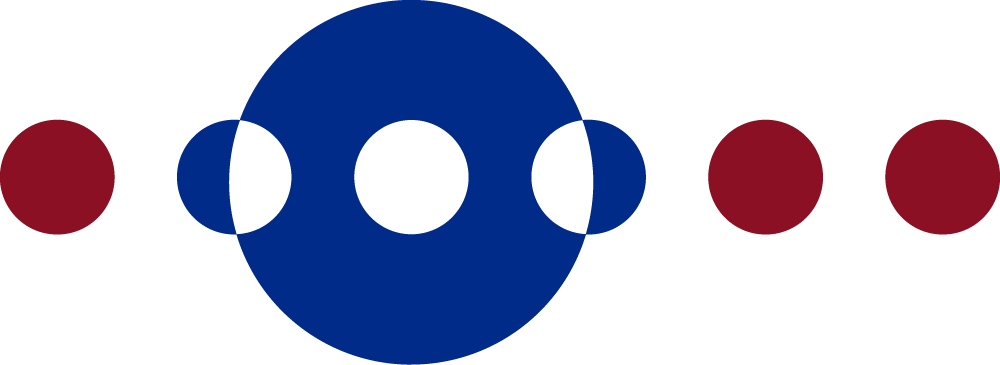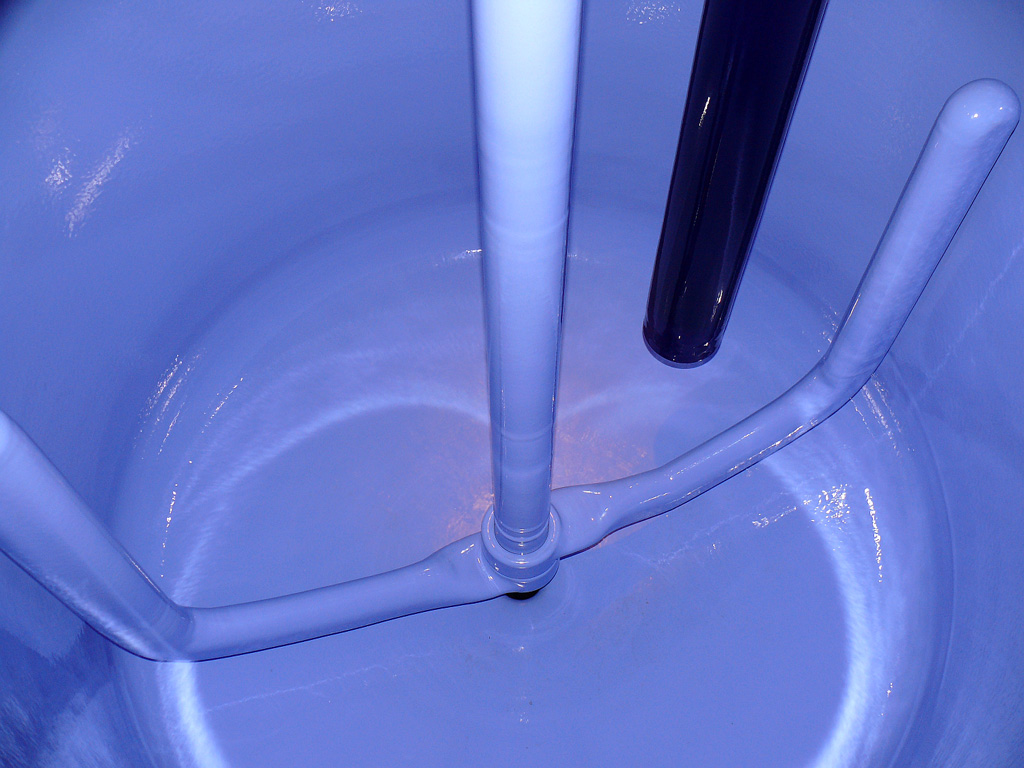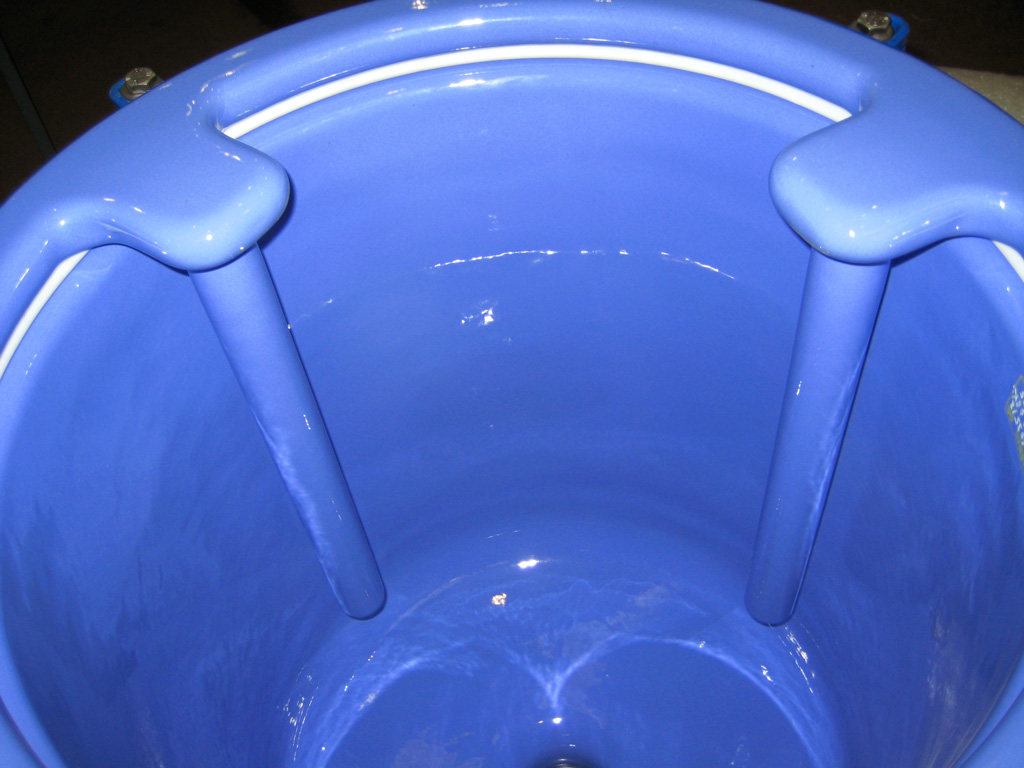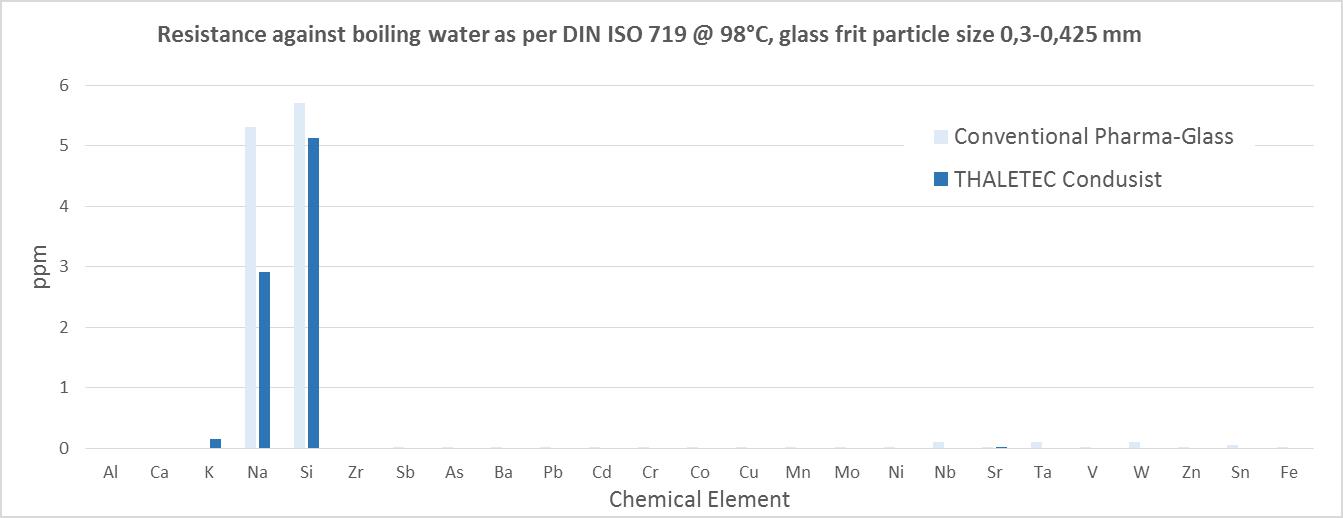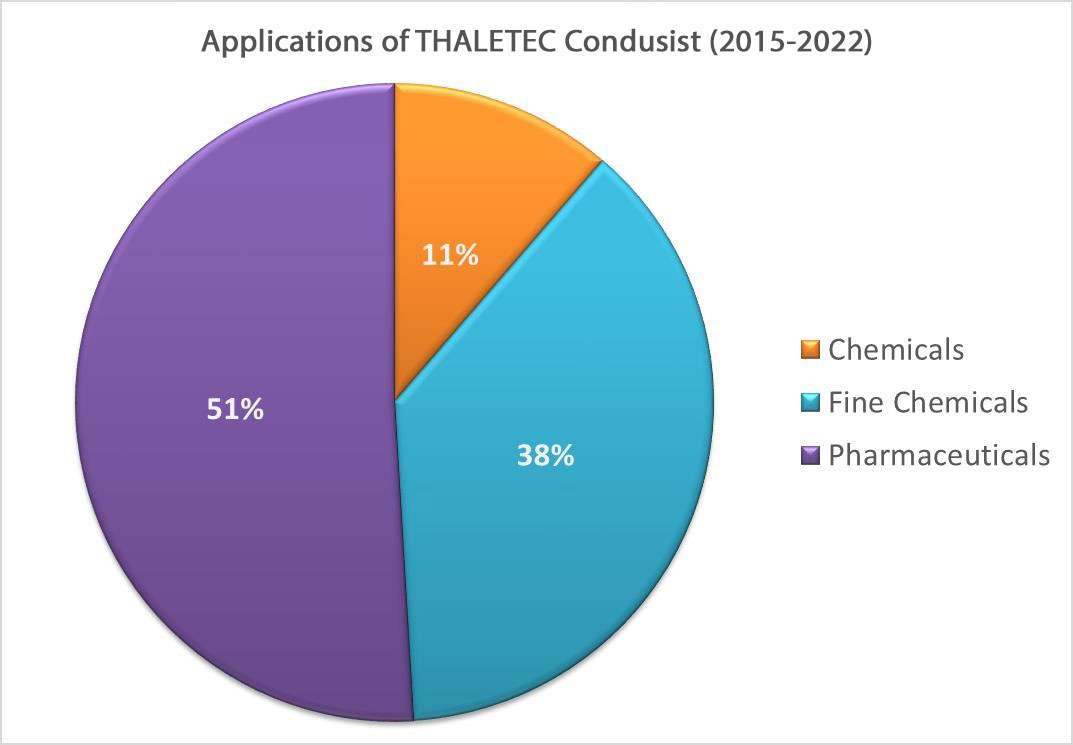Pharma-Glass is the past – the future is here
Previous Pharma-Glass for pharmaceuticals and fine chemicals belongs to yesterday Today, electrical conductivity is also sought
For many years, some manufacturers, including THALETEC, have been offering a glass linings which is especially suitable to meet the requirements in the production of active pharmaceutical ingredients, pharmaceutical syntheses and fine chemicals. The THALETEC solution has been marketed since 2001 under the name TPE 2000-THALETEC Pharma Email [Pharma-Glass] (see Flyer K002).
At that time the following requirements were the basis for the development:
- Strong resistance to acid attack
- Higher resistance to alkali attack than conventional glass linings
- Reduced proportion of heavy metals which may dissolve if the glass lining has been chemically attacked.
- Light blue colour to better observe the processes in the container and to simplify testing after cleaning
These requirements still exist today but they are supplemented by an essential property which previous ‘Pharma-Glasses‘ do not have: electrical conductivity!
Why is electrical conductivity so important in API processes?
Electrical conductivity is often of paramount importance in the manufacture of active pharmaceutical ingredients and fine chemicals:
- The electrical conductivity of the glass lining prevents the destruction of the glass lining layer by electrostatic charges during the processing of polar solvents.
- The use of polar solvents during the cleaning process can cause damage to a non-electrically conductive glass lining, even if the process conditions would not normally be critical.
- Electrical conductivity minimises explosion protection risks and reduces production downtime risks.
THALETEC CONDUSIST the electrically conductive glass lining for pharmaceuticals and fine chemicals
With CONDUSIST, THALETEC offers (see Flyer K098), a technical glass for process engineering apparatus, which is electrically conductive in addition to the essential properties of previous ‘Pharma-Glasses’. The active principle of CONDUSIST is based on the fact that a ceramic, electrically semiconducting phase is embedded in the glass matrix of the glass lining. Through the application procedure and the baking process of the glass lining, a 3-dimensional network structure of semiconductors of the elements, which ensures that any electrical charges generated are safely dissipated, is created. In addition to electrical conductivity, CONDUSIST has the same properties as previous Pharma-Glass:
- Strong resistance to acid attack
- Higher resistance to alkali attack than conventional glass linings
- Reduced proportion of heavy metals which may dissolve if the glass lining were to be chemically attacked.
- Light blue colour to better observe the processes in the container and to simplify testing after cleaning
The electrically conductive CONDUSIST has established itself as the standard solution for applications in pharmaceutical applications and the production of API and is already being used very successfully by many customers. CONDUSIST is, of course, also available for all applications where electrostatic discharges occur and the dissipation capability of the glass lining can ensure that damage to the glass lining is prevented.
In addition to the pharmaceutical and fine chemical industry, the general chemical industry has also adopted the advantages of the new glass lining and explicitly refers to this functionality in risk considerations for explosion protection. Although the danger of electrostatic charges in the chemical industry does not have to be permanent, it often also occurs - for a limited time - during the cleaning of equipment.
CONDUSIST is clean
The leaching test according to DIN ISO 719 describes a procedure to determine the substances dissolving from the glass lining when they are stressed through boiling water. During the test, glass grit is leached out at 98°C for 60 minutes. The dissolved elements are then determined.
Illustration 3 shows the result of a leaching test according to DIN ISO 719 for THALETEC CONDUSIST as well as for conventional ‘Pharma-Glass’, which is at the technical level of 2001.
It can be clearly seen that, as with all glass linings, the elements sodium and silicon in particular are leached out. Since sodium and silicon are also the main components of all technical glass, this is not surprising either. It can also be seen that THALETEC CONDUSIST has lower leaching values than conventional Pharma-Glass due to its strong chemical resistance vis-à-vis these elements. Compared with conventional Pharma-Glasses, CONDUSIST only shows perceptible leaching effects with potassium, whereas a conventional Pharma-Glass also shows leaching effects with niobium, tantalum, tungsten, strontium and tin.
It should be emphasised in particular that the network former contained in THALETEC CONDUSIST for achieving electrical conductivity is not leached out.
CONDUSIST since 2015
THALETEC CONDUSIST was introduced at Achema 2015. The glass lining itself is based on a development introduced to the Asian market by a Japanese glass lining specialist as early as 2005. The orders delivered by THALETEC since 2015 were divided equally between chemical and pharmaceutical applications. Chemical applications are in turn dominated by fine chemicals.
Reglassing with CONDUSIST is possible
Important to know: THALETEC can re-glass your existing glass-lined appliances with CONDUSIST, even if they have been manufactured by other European manufacturers. With reglassing, it is thus possible to upgrade existing technology at a manageable cost. Contact us - we will be happy to advise you!
TPE 2000 still out there
Of course, the proven THALETEC Pharma-Glass TPE2000 (Flyer K002) is still available, even if this technical glass and the technology behind it no longer appear to be suitable for use in many cases.
Getting to know measures for handling electrostatics
In one of our workshops (see Flyer K101) you can learn more about the development, dissipation and safe handling of electrostatics in glass-lined equipment. We will show you how you can avoid damage to, and the failure of, your equipment with preventive measures.



